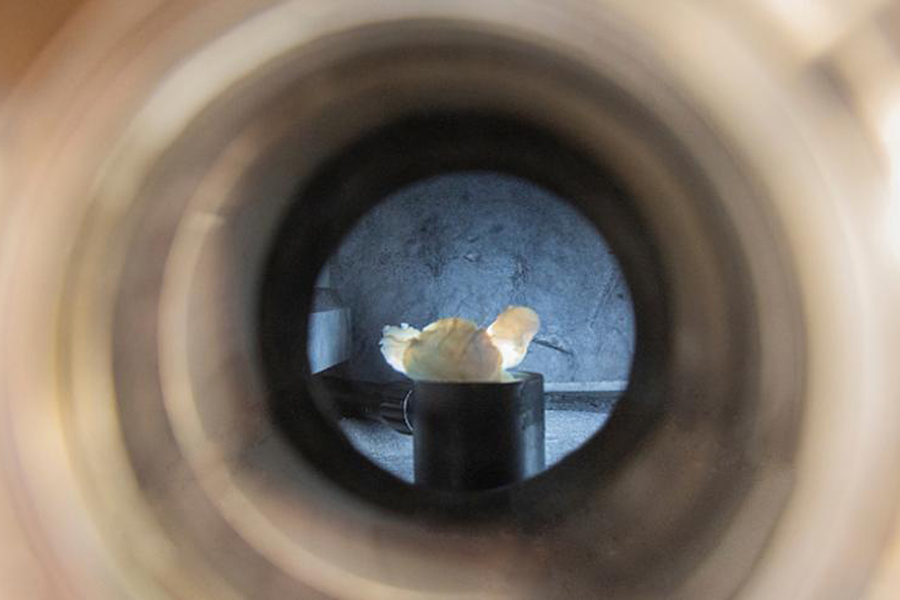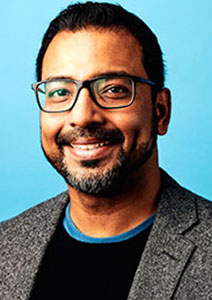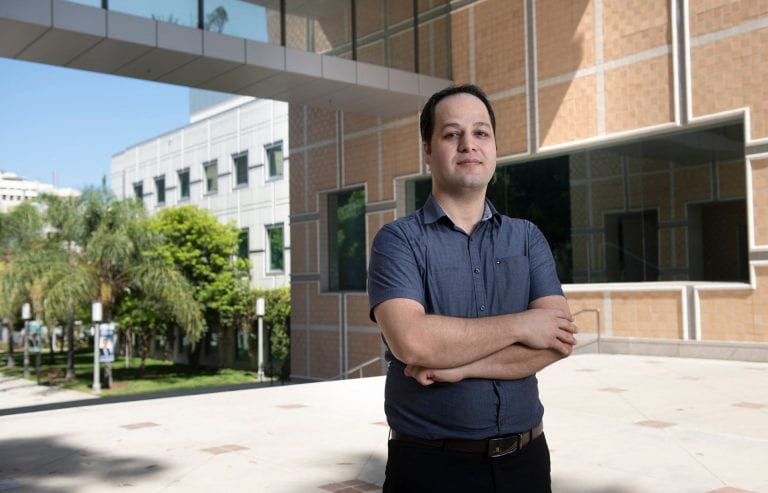The ASME Foundation, the philanthropic arm of the American Society of Mechanical Engineers, has been awarded a $3.975 million four-year grant from the U.S. Department of Labor to develop and implement a national apprenticeship program in mechanical engineering technology.
Tag: nanotechnology
Engineered nanovesicles from activated neutrophils show promise in treating infected wounds
A recent study has developed nanovesicles (NVs) from activated neutrophils, showcasing their ability to perform molecular debridement and accelerate healing in infectious wounds. This novel method significantly enhances treatment effectiveness, particularly for stubborn diabetic wounds, by targeting and neutralizing deep tissue pathogens.
The art of molecular self-assembly: crafting 2D nanostructures for advanced materials
Researchers have made significant strides in nanotechnology with the discovery of a method to self-assemble block molecules into sophisticated two-dimensional (2D) nanopatterns. This innovative approach allows for meticulous crafting of materials at the nanoscale, surpassing the limitations of conventional lithography. The article illuminates the path for developing advanced nanostructures with applications in nanotechnology, promising a new era of material design and fabrication.
Micro-oscillator symphony: stochastic resonance in nanotech
In a significant stride for nanotechnology, a new model has been crafted to demystify the stochastic response of nonlinear dynamical systems, particularly the complex behavior of arrays of coupled micromechanical oscillators. This development is key to enhancing the precision of nanomechanical systems critical for detecting molecules and chemicals associated with diseases.
Mass production will soon make ultra-large nano transparent screens accessible to everyone
Newly developed nano transparent screen can be mass-produced at one-tenth the cost of existing screens…Viewers can watch high-definition video footages from multiple angles
Nanotechnology applications in biodiesel processing and production: A comprehensive review
Abstract The wide application of diesel engines globally and the resulting exhaust emissions have been the driving force behind producing eco-friendly alternatives to fossil diesel. Biodiesel derived from triglycerides is a promising replacement for fossil diesel due to less contribution to greenhouse gases and other harmful…
Swimming microrobots deliver cancer-fighting drugs to metastatic lung tumors in mice
UC San Diego engineers have developed microscopic robots, known as microrobots, capable of swimming through the lungs to deliver cancer-fighting medication directly to metastatic tumors.
Plant virus treatment shows promise in fighting metastatic cancers in mice
An experimental treatment made from a plant virus is effective at protecting against a broad range of metastatic cancers in mice, shows a new study from the University of California San Diego.
Agreement Signing on Authorization of Rights under Petty Patent regarding “Nanoparticle Encapsulated Hydrogel Composition for Essential Oils and Preparation Methods”
Prof. Dr. Kaywalee Chatdarong, Vice President for Strategic Planning, Innovation and Global Engagement, Chulalongkorn University, and Mrs. Walairat Pongjitt, Director of Premier Innova Co., Ltd., Dr. Teerapong Yata, Managing Director of Premier Innova Co., Ltd., and Asst. Prof. Dr. Sirakarn Thitawat, Faculty of Veterinary Science, Chulalongkorn University, signed an agreement authorizing Premier Innova Co., Ltd., to exercise the rights under the petty patent regarding “The Nanoparticle Encapsulated Hydrogel Composition for Essential Oils and the Preparation Methods” owned by Chulalongkorn University.
Waterproof ‘e-glove’ could help scuba divers communicate
Researchers reporting in ACS Nano have constructed a waterproof “e-glove” that wirelessly transmits hand gestures made underwater to a computer that translates them into messages. The new technology could someday help divers communicate better with each other and with boat crews on the surface.
New Technique Lets Scientists Create Resistance-Free Electron Channels
Researchers have taken the first atomic-resolution images and demonstrated electrical control of a chiral interface state – an exotic quantum phenomenon that could help researchers advance quantum computing and energy-efficient electronics.
Nanoparticles activated by ultra-low-energy X-rays effectively halt the aggregation and toxicity of amyloid beta in preclinical models
A collaborative effort between Israeli and Italian researchers has led to the development of a new treatment strategy targeting the early-stage aggregation of A-beta before the formation of toxic oligomers.
Harnessing Nature’s Shield: Enhancing Sun Protection with Lignin Nanoparticles in Cosmetics
Pioneering research unveils lignin nanoparticles as potent UV-blocking agents, with their chemical structure and size effects extensively altering the sun protection efficacy of cosmetics. LNPs with tailored structures outperform conventional additives, offering enhanced UV resistance and eco-friendly solutions for skincare formulations.
Call for Papers and Participation: Joint International Conference on ‘Cutting-edge Nanotechnologies for Good Health and Well-being’
The Faculty of Medicine at Chulalongkorn University, cordially invites all those who are interested to attend the joint international conference on “CUTTING-EDGE NANOTECHNOLOGIES FOR GOOD HEALTH AND WELL-BEING” from July 9-12, 2024 between 8:00 and 18:00 hrs. at Chulalongkorn University and Mandarin Hotel, Bangkok, Thailand.
Researchers Develop Economical Tool to Facilitate Identification of Disease-Causing Pathogens
SMU nanotechnology expert MinJun Kim helped a team of researchers at The University of Texas at Austin to develop a less expensive way to detect nuclease digestion – one of the critical steps in many nucleic acid sensing applications, such as those used to identify COVID-19.
RNA Scientist Receives Federal Funding to Commercialize Molecular Tool Against Alzheimer’s Disease
University at Albany scientist Scott Tenenbaum, founder of UAlbany spinoff company sxRNA Technologies, Inc. (sxRNA Tech), has received $500,000 from the National Institute on Aging, part of the National Institutes of Health, to study how aging brain cells shape the progression of Alzheimer’s disease, and advance RNA technology that could inform new therapeutics to prevent and treat Alzheimer’s and related dementias.
Small yet mighty: showcasing precision nanocluster formation with molecular traps
Researchers demonstrate the growth of cobalt nanoclusters on two-dimensional copper surfaces using an array of ring-shaped crown ether molecules.

UAH researchers design revolutionary low-cost wearable biosensor to enhance athletic performance and physical health
Researchers at The University of Alabama in Huntsville (UAH) have designed a wearable biosensor that offers a new way to measure human muscle activation to potentially prevent injuries and enhance athletic performance.
‘Plug and play’ nanoparticles could make it easier to tackle various biological targets
UC San Diego engineers have developed modular nanoparticles that can be easily customized to target different biological entities such as tumors, viruses or toxins. The surface of the nanoparticles is engineered to host any biological molecules of choice, making it possible to tailor the nanoparticles for a wide array of applications, ranging from targeted drug delivery to neutralizing biological agents.
A new era for accurate, rapid COVID-19 testing
Research from Osaka University demonstrates a nanopore-based technique that can detect different variants of SARS-CoV-2, the virus that causes COVID-19. The method was very effective in detecting the Omicron variant of the virus in the saliva of people with COVID-19.
Researchers design a pulsing nanomotor
An international team of scientists headed by the University of Bonn has developed a novel type of nanomotor. It is driven by a clever mechanism and can perform pulsing movements.
Nanoparticle vaccine could curb cancer metastasis to lungs by targeting a protein
UC San Diego engineers have developed an experimental vaccine that could prevent the spread of metastatic cancers to the lungs. Its success lies in targeting a protein known to play a central role in cancer growth and spread, rather than targeting the primary tumor itself.
Chameleon-inspired coating could cool and warm buildings through the seasons
By mimicking a desert-dwelling chameleon, a team reporting in ACS’ Nano Letters has developed an energy-efficient, cost-effective coating. The material could keep buildings cool in the summers — or warm in the winters — without additional energy.
Tiny nanocarriers could prove the magic bullet for acne sufferers
Acne is a skin disorder that makes life miserable for around 800 million teenagers and adults worldwide, but Australian scientists may have found an effective treatment for sufferers, delivered via tiny nanoparticles.
Ultrathin nanotech promises to help tackle antibiotic resistance
Researchers have invented a nano-thin superbug-slaying material that could one day be integrated into wound dressings and implants to prevent or heal bacterial infections.
Immunotherapy: Antibody kit to fight tumors
A new study highlights the potential of artificial DNA structures that, when fitted with antibodies, instruct the immune system to specifically target cancerous cells.
FAU Receives $11.5 Million Gift to Combat Life-threating Illness, Amyloidosis
Because amyloidosis doesn’t affect a specific organ and can be present throughout the body including the heart, kidneys, liver and brain, unraveling the underlying cause of amyloid fibril creation – a hallmark of this disease – is complex and challenging. A monumental $11.5 million gift from philanthropists Ann and John Wood will enable FAU’s Schmidt College of Medicine to create a game-changing infrastructure using a whole-body approach and multi-disciplinary team.
Synthetic DNA could help scientists modify genes and create new biofuels
Unlocking the potential of laboratory-crafted DNA, known as synthetic DNA, holds the key to groundbreaking advancements across multiple domains, according to quantum biologists from the University of Surrey.
Transforming plants into allies in the fight against climate change
Nature-based solutions are an effective tool to combat climate change triggered by rising carbon emissions, whether it’s by clearing the skies with bio-based aviation fuels or boosting natural carbon sinks. At the Department of Energy’s Oak Ridge National Laboratory, scientists are leading research to transform plants into key drivers of decarbonization, from creating biomass crops for new fuels to enhancing the ability of plants to absorb and store carbon.
UC Irvine researchers create E. coli-based water monitoring technology
Irvine, Calif., Feb. 23, 2023 – People often associate Escherichia coli with contaminated food, but E. coli has long been a workhorse in biotechnology. Scientists at the University of California, Irvine have demonstrated that the bacterium has further value as part of a system to detect heavy metal contamination in water. E.
How a Record-Breaking Copper Catalyst Converts CO2 Into Liquid Fuels
Since the 1970s, scientists have known that copper has a special ability to transform carbon dioxide into valuable chemicals and fuels. But for many years, scientists have struggled to understand how this common metal works as an electrocatalyst, a mechanism that uses energy from electrons to chemically transform molecules into different products.

FAMU-FSU researchers find thermal limits of advanced nanomaterials
A team of FAMU-FSU College of Engineering researchers at the High-Performance Materials Institute completed the first-ever study on how purified boron nitride nanotubes remain stable in extreme temperatures in inert environments.
‘Lights out’ for antibiotic-resistant superbugs
It’s ‘lights out’ for antibiotic-resistant superbugs as next-generation light-activated nanotech proves it can eradicate some of the most notorious and potentially deadly bacteria in the world.
Story tips from the Department of Energy’s Oak Ridge National Laboratory, December 2022
Naturally derived materials fit for 3D printing; Next-gen hydropower starts with testing; Long-haul trucking meets megawatt-scale charging; New insights advance atomic-scale manufacturing
The nano-magnets that will restore damaged nerve cells
When neurons are damaged by degenerative disease or injury, they have little, if any, ability to heal on their own. Restoring neural networks and their normal function is therefore a significant challenge in the field of tissue engineering. Prof. Orit Shefi and doctoral student Reut Plen from the Kofkin Faculty of Engineering at Bar-Ilan University have developed a novel technique to overcome this challenge using nanotechnology and magnetic manipulations, one of the most innovative approaches to creating neural networks.
Efficient nanovaccine delivery system boosts cellular immunity
Cancer immunotherapies, such as immune checkpoint inhibition therapy, have been attracting attention in recent years as new methods for treating cancer.
Building with nanoparticles, from the bottom up
Researchers at MIT have developed a technique for precisely controlling the arrangement and placement of nanoparticles on a material, like the silicon used for computer chips, in a way that does not damage or contaminate the surface of the material.
Atomic-level 3D models show us how gadgets work
Although nanotechnology and materials science are complicated topics for most of us, the research in these fields is of great importance to almost everyone. Your digital gadgets, for example, are completely dependent on it.
Researchers test hybrid, soft/hard nanocarriers to deliver drugs to the brain
Researchers are working to develop nanocarriers that deliver drugs across the blood brain barrier. Successful nanocarriers could lead to treatments for brain disorders including Alzheimer’s disease, Parkinson’s disease, ischemic stroke, epilepsy and seizures.

Advancing new technologies to halt bleeding
The research arm of the U. S. Army has awarded Case Western Reserve University blood surrogate pioneer Anirban Sen Gupta a four-year, $2.5 million grant to advance and optimize his latest nanotechnology to stop bleeding from battlefield injuries.
The new technology devised by Sen Gupta and his team is called “SanguiStop.” It allows a clot-promoting enzyme called thrombin to be intravenously delivered in a targeted manner to a bleeding area—especially to the site of internal injuries.
‘iTEARS’ could help diagnose diseases by isolating biomarkers in tears
In ACS Nano, researchers report a nanomembrane system that harvests and purifies tiny blobs called exosomes from tears, allowing researchers to quickly analyze them for disease biomarkers. Dubbed iTEARS, the platform could enable more efficient and less invasive diagnoses for many diseases.

UCI researchers invent a health monitoring wearable that operates without a battery
Irvine, Calif., July 12, 2022 – A new self-powered, wristwatch-style health monitor invented by researchers at the University of California, Irvine can keep track of a wearer’s pulse and wirelessly communicate with a nearby smartphone or tablet – without needing an external power source or a battery. In a paper published recently in the journal Nano Energy, team members in UCI’s Henry Samueli School of Engineering describe their invention, built via 3D printing of nanomaterials on flexible substrates for real-time and wireless monitoring of vital signs.
These energy-packed batteries work well in extreme cold and heat
Researchers developed lithium-ion batteries that perform well at freezing cold and scorching hot temperatures, while packing a lot of energy. This could help electric cars travel farther on a single charge in the cold and reduce the need for cooling systems for the cars’ batteries in hot climates.
Tiny fish-shaped robot ‘swims’ around picking up microplastics
Researchers in ACS’ Nano Letters report having created a light-activated fish robot that “swims” around quickly, picking up and removing microplastics from the environment.
‘Fruitcake’ Structure Observed in Organic Polymers
Researchers have analysed the properties of an organic polymer with potential applications in flexible electronics and uncovered variations in hardness at the nanoscale, the first time such a fine structure has been observed in this type of material.
New non-radioactive, neutral reagent reveals viruses in clear detail
Seeing is believing — or, for scientists, the beginning of understanding.
Fast-tracked: First in-human trial for aggressive brain tumours
A novel technology designed to precisely image aggressive brain cancers and guide treatment is being developed by the University of South Australia and Australian cancer diagnostic company, Ferronova, potentially helping thousands of people who are diagnosed with the deadly condition each year.
Researchers develop a paper-thin loudspeaker
MIT engineers have developed a paper-thin loudspeaker that can turn any surface into an active audio source.
New COVID vaccine design is easier to manufacture, doesn’t need cold storage
Currently available COVID vaccines require cold storage and sophisticated manufacturing capacity, which makes it difficult to produce and distribute them widely, especially in less developed countries.
Compact amplifier could revolutionize optical communication
Researchers at Chalmers University of Technology, Sweden, present a unique optical amplifier that is expected to revolutionise both space and fiber communication.